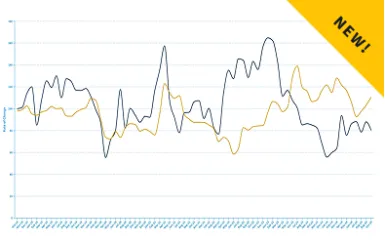KOA's Toby O'Rouke Q&A With The New York Times On The Future Of Camping
This summer, Kampgrounds of America celebrates its 60th anniversary. Since 1962, when two businessmen started charging travelers a small fee to set up camp along the Yellowstone River in Billings, Mont., the company’s canary-yellow signs with a red tepee have become ubiquitous along highways across the United States and Canada, advertising budget camping and cabin accommodations. Now the network of more than 500 campgrounds more commonly known as K.O.A. is expanding into glamping.
In 2019, K.O.A. created a new brand called Terramor and transformed an existing campground with R.V. hookups near Acadia National Park into a resort with 64 canvas-and-wood tents, massage service and a bar and restaurant. While the pandemic delayed the resort’s opening to August 2020, it was a boon to camping overall. The Terramor flagship property was no different, with 77 percent occupancy in its first year.
As K.O.A. looks to build on this momentum, Toby O’Rourke, the company’s first female chief executive, discussed the company’s expansion and adapting to the tastes of a new demographic of camper.
And if you’ve often wondered what’s up with the “K,” Ms. O’Rourke said it started out as a “C,” but the artist who created the company’s logo, Karlo Fujiwara, thought the letters fit together better with the alternate spelling. It also made trademarking the logo easier, she said.
The conversation has been edited for length and clarity.
Data compiled by K.O.A. show camping trending among a much younger and diverse population. Does that change how people camp?
Yes, absolutely. Multigenerational camping in Hispanic families is popular. Some members of the family might want to be in a tent while others prefer an R.V. or a cabin. So we might have a tent site near an R.V. hookup and cabin and have them all near a central fire site.
One of the things that I find fascinating about Gen Z is that they want to disconnect. We have Wi-Fi at our parks. And we work really hard to make sure technology is accessible. But Gen Z wants to be off technology. While they’ve grown up with it, they look at camping as a good way to disconnect. They do that more than other generations. They’re also looking to engage with and camp at places that align with things that are important to them, particularly social causes and the environment.
What are the environmental issues surrounding camping?
During Covid a lot of public parks were shut down. People were boon-docking and camping anywhere. So education is a big component. We came out with a lot of information to teach our campers about managing their waste and how you leave your site.
We’re always looking at ways we can be mindful of the environment. Now we’re introducing electric chargers for E.V. cars and R.V.s. We’re looking at picnic tables with solar chargers, water reclamation and recycling.
[...]
Read the full article from The New York Times here.
Please Sign in to View
Log in to view member-only content.
If you believe you are receiving this message in error contact us at memberservices@rvia.org.

